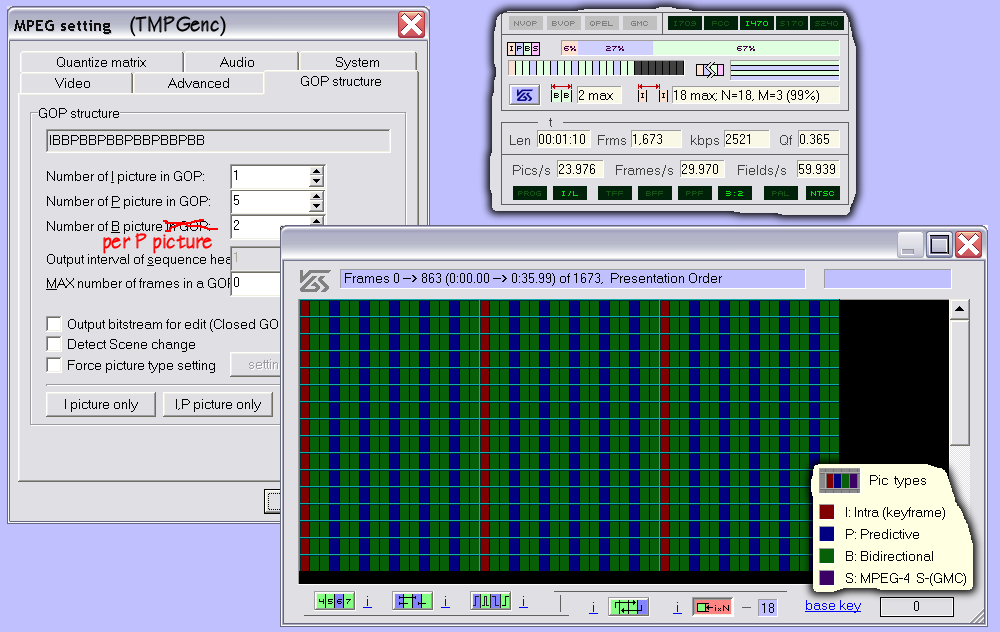 |
|
The "Visual GOP
Structure" VGS) feature information is present in limited summary
form, as seen in the small cutout excerpt of the main dialog, above.
VGS provides currently provides
additional
detailed information
about MPEG-1, 2, and 4 files and MPEG within AVI (e.g. XviD, DivX).
The summary shows items which are settable when encoding, but not
usually "readable" from the finished files. This includes the types
of frames used, percentage of each in the overall makeup, as max and
average distance between "I-frames" ("keyframes"), and max
consecutive "B-frames". It also shows the overall structure used and
repetitive
"GOP structure", if
any. The full VGS dialog itself, if available for the selected filetype, is separate from the main GSpot screen and is accessed from the main screen by pressing the small light blue button on the with stylized navy blue "VGS " logo, as seen main dialog excerpt above
The graphical looking dialog on the lower right of the image above is a simple example of this VGS detail dialog. Refer to the VGS detailed screenshots for the many other capabilities the VGS can provide. The gray dialog on the left of the image above is a settings dialog TMPGEnc (a third-part MPEG creation app, unrelated to GSpot). TMPGEnc is an app which allows these technical settings to be specified in detail. It is only shown for reference as an indication of how the settings used to create the test file shown are accurately reflected in by GSpot's analysis of the result. For example, the "IBBPBBPBBPBBPBBPBB" pattern shown on TMPGEnc's advanced settings dialog is represented as corresponding colors on the GSpot VGS dialog. Note: The reason I've crossed out and re-worded one of the labels in TMPGEnc's settings dialog because, though it works fine, I consider that particular label poorly worded at best. |
 |
| The set of screenshots above is nearly identical, although in this case I created the file with TMPGEnc's "Detect Scene Changes" checkbox ticked. As can be seen, the pattern is no longer as repetitive - some keyframes come at an earlier than expected interval and are marked as "Closed GOP". These markings can be used to detect at which frame a "scene change" occurs, as well as well as where the file could be cut and cleanly spliced (which is not just any keyframe, as people often believe). Again, see the VGS detailed screenshots for more information. |
| Back to GSpot v2.60 |